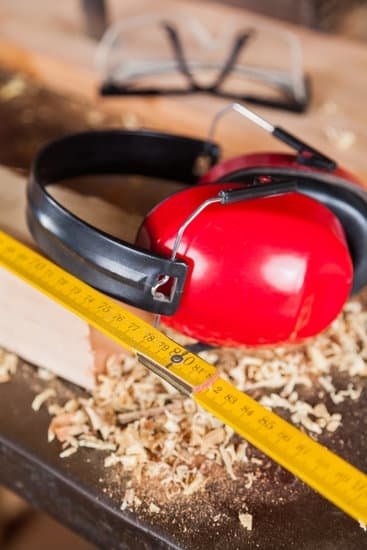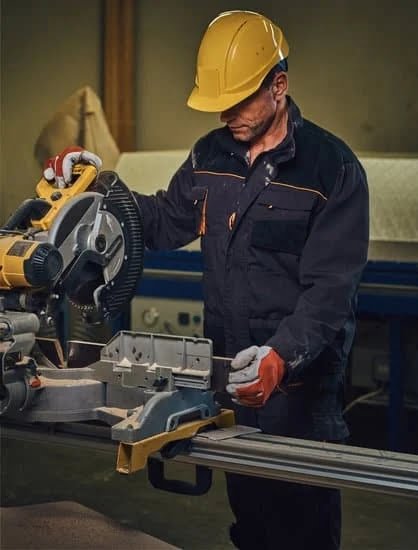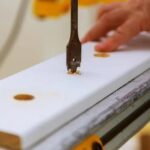Additional Topics
Sharpening Pencils for Woodworking
Having a good sharp pencil is important when woodworking, as it lets you draw clearly visible lines and make precise marks. To sharpen a pencil, you’ll need a high-quality sharpener or knife. If using a sharpener, insert the pencil into the hole at one end and rotate the pencil until it reaches its desired point. If using a knife, cut away the wood of the pencil to achieve the shape you want. Before beginning any woodworking project, make sure your pencil has been sharpened properly so that it works smoothly and accurately.
Alternative Tools for Woodworking
While pencils are often used for woodworking ” especially for marking out designs before cutting ” there are some other tools out there that can give better results. Mechanical drafting pens use waterproof inks that won’t fade or smudge with sanding and staining processes. Chalk also works well for this purpose but should always be sealed off to maintain its visibility throughout different steps in the project. Lastly, felt tip pens provide greater accuracy than regular pens and they don’t run like ink pens do if exposed to water. While standard pencils may be commonplace, consider trying out these alternative tools to see which one works best for your individual needs!
Step-by-Step Process
1. Sharpen the Pencil: To prepare for woodworking with a pencil, it is important to sharpen the pencil. Use a sharpener specifically designed for pencils since this will produce more accurate results.
2. Choose the Right Pencil: Depending on the task and desired accuracy, you can use either a softer lead or harder lead pencil. A softer lead will create darker lines but may smudge more easily; a harder lead creates lighter lines that are less likely to smudge but can be harder to erase if mistakes are made.
3. Marking When Measuring: Before beginning any woodworking project, make sure to mark any measurements beforehand so as not to make any errors while cutting wood pieces. Carefully measure each piece before marking them with your chosen type of pencil according to how much detail you need on each piece.
4. Shading and Detailing: For certain woodworking tasks, such as producing furniture, detailed shading or drawing can help give pieces the look they want ” this is something that’s best done with a softer lead pencil which can provide more precise details when detailing objects or furniture pieces.
5 .Testing Accuracy Before Cutting : After markings have been made on all pieces that need cutting, always double check every meaurement before making any cuts in order to prevent costly mistakes throughout your project!
6 .Finishing Up : Once all cuts have been made, use sandpaper with the grain of the wood so as not too damage it’s structure ” then wipe off any visible marks from the penciled measurements before staining and finishing !
Incorporate Visuals
Pencils are commonly used for woodworking tasks of varying degrees”from finely detailed pieces to larger projects like installing complex furniture features. They can be ideal tools when handled with the utmost precision and accuracy, but even a small mistake in measurement or placement can result in a major setback.
To ensure success, an understanding of the various types of woodworking pencils and their intended use is necessary. There are several possibilities that range from basic-grade models to more specialized options.
The most common type of woodworking pencil is the carpenter’s pencil, also known as a “flat” or “regular” pencil. It typically has a square shape and lead size of 1/4 inch wide by 1/8 inch thick. It comes in various colors, making it relatively easy to distinguish from other items on the workbench.
Other options include technical or drafting pencils, which are triangular in shape for better grip control and often have a more rounded lead point than carpenter’s pencils. Whereas carpenter’s pencils are designed for general marking requirements when building structures like houses or furniture, drafting pencils provide greater accuracy for drawing plans or complex designs with precision lines and measurements.
A mechanical pencil is another type of specialized device used for certain woodworking tasks. Unlike standard wooden varieties that require frequent sharpening, these instruments use thin rods of graphite held in place by metal or plastic housings along with retractable lead holders. This allows workers to draw fine lines without any sharpening adjustments while still providing the same accuracy as other types of instrumentation.

Colorful Tips
One of the most common uses of a pencil for woodworking is precise, fine detailing and marking. To do this effectively, it is important to ensure that the pencil being used has a sharp and precise tip. This can be achieved by frequently sharpening it. It is also recommended to use a fine-grit sandpaper with extra-fine grit to ensure that the lead point remains sharp and precise. Furthermore, when carving or cutting through wood, it is also important to keep a wooden eraser on hand for cleaning up mistakes and shavings. Traditional plastic erasers are very hard and can scratch the surface of delicate pieces of wood, so be sure to opt for those made from felt or rubber instead. For making intricate drawings, mechanical pencils provide increased accuracy due to their consistent lead width compared to standard wooden pencils. All in all, it’s important to consider the specific project at hand when selecting which type of pencil will work best for a specific task.
Review Section
In woodworking, pencils are essential tools for the precise marking and detailing needed for the best results. Pencils come in all shapes and sizes to fit any type of project. Some of the most common types of pencils for woodworking are lead, colored, graphite, and carpenter pencils.
Lead pencils are ideal for woodworking since they will not smudge as easily as other writing instruments. They also give you clear, accurate lines on non-porous surfaces like plastic or laminate. Most lead pencils have a thick tip which makes them easier to control on the workpiece.
Colored pencils can be used when shading requires precise detailing and accuracy at the same time. Choose brightly colored colored pencils that contrast with your workpiece’s color to create interesting effects.
Graphite pencils have a softer lead than other types of pencils and provide a general purpose writing product that has been used in sketching or to mark pieces by hand in order to reach desired finishes or patterns before applying special colors or varnishes to complete projects. Graphite is great for making delicate lines that can be easily erased if needed too.
Carpenter pencils provide stability when marking parallel lines on woodwork with its wide marking surface rather than rounded edges which can slip off edges of workpieces. These types of pencils require minimal effort during use as their thicker lead makes line outlining much easier to achieve more accuracy for maximum precision in angles and details due to their shorter length allowing movement closer towards seams and joints.
We’ve compiled quotes from some well respected professionals in the field that offer up-to-date reviews of different types of pencil products available specifically designed with wooden workspaces in mind:
“My go-to WoodWorkers Pencil is the dark blue Lead Pencil by Palomino – it’s uncanny precision paired with smudge resistant properties make these perfect for detailed drawing.” – John M., Professional Carpenter
“The carpenter’s design gives this body style extra durability while also providing completely accurate angles measuring even down to fractions.” – Sandy C., Experienced Wood Work Crafter
“It seems like ever since I switched my Graphite Sketch Pencil out for the Designers Edition Multi-color one I just get smoother lines everytime.” – Hassan D., Artist & Designer

Hi everyone! I’m a woodworker and blogger, and this is my woodworking blog. In my blog, I share tips and tricks for woodworkers of all skill levels, as well as project ideas that you can try yourself.





